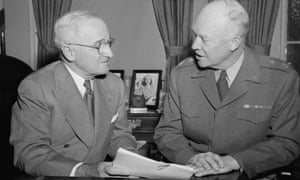When all has been done, when over three decades have passed there is hope that storytelling can to turn HIV-related implicit and explicit provider-bias into opportunities for Zero HIV-related deaths; zero-stigma; zero discrimination
In Uganda, like many other countries in Africa anythings "western" has been taken as the preferred and anything "indigenous" given a cursory glance. To some divesting of any indigeneity is a mark of having gained it. But, again, the inherited infrastructure these countries that were former colonies of European countries got may not allow for taking a step back into the indigenous treasure trove of survival skills. Why did the ancients indulge in storytelling when during those the number of wild animals ferocious to humans was far larger? How has storytelling survived and become one of the marks of civilization? Anyway, that will be the subject of another blog. Let us get on with the objective of this blog.
Case #1, Nabimanya is a 19 year old sexually active boy living with HIV whose only sexual health counselling message has been reduced to abstinence.
Case #2, Grace is a 22 year old female sex-worker who one day turned up at a local drug-store run by a person who knew her well, to purchase her prescription of a mild headache. She was greeted by “we have run out of STD meds!”
Case #3, at a very busy clinic, the physician-in charge took an extraordinary step when she increased the number of counselling staff as well lobbied funds to train 130 village health workers who in turn helped provide adherence support to many people living with HIV. After a while, this clinic saw the wait-time decrease, less numbers of complications and opportunistic infections.
In case 1, we read about a person who is a teenager, sexually active and living with HIV whose one message quarantined him and was a reminder of how much he should suppress his sexual life probably due to HIV. Does this tell us how we as providers prepare ourselves and those in our charge for a life of a dreary sexual life?
In case 2, a female sex-worker goes to her friend’s drug-shop for a pain reliever. The friend blurts out, probably in ear-shot of all and sundry how the drug-shop has run out of STD meds. Who can relate with this scenario?
In case 3, the physician-in charge resolved two things. One, at her clinic large numbers of clients was the norm. She figured out what the cause of most complaints were and eventually even the numbers were large, the wait time was shortened.
Uganda is pulled on one side by the graying of AIDS and the young and restlessness of HIV:
Uganda is experiencing a groundswell of HIV/AIDS prevalence for people aged 15-49 years in Uganda which according the World Bank is now 7.6% from 6.5%, with an estimated 70,000 HIV/AIDS-related deaths (2015). There is need to see how we can relate to five factors as we address these increasing numbers of HIV cases in Uganda especially among those below 49 years. These factors are: HIV; risk; responsibility of provider; responsibility of service-seeker; controlling verbal/non verbal cues as we provide services; and update ourselves with newer knowledge to address problems. The magic bullet is through story-telling.
Think humanistically about the client:
Heather Boerner (2016) in a study, concluded that thinking about the contexts of the lives of clients who came to clinics and seeing them in their full entirety not only empowers clients to take full charge of their lives, but clears biased beliefs about HIV, risk and responsibility that don't match up with the best practices. Through their own stories can one get to know clients. Story-telling can demystify and shatter some care, diagnosis and treatment myths.
Juggle the preferred and substitute solutions:
According to Lustig, M. W., & Koester, J., “culture is a learned set of shared interpretations about beliefs, values, norms and social practices that affect the behaviors of a relatively large groups of people” (p.135). There is a link that binds all the above three cases to how we provide opportunities for the 3 zeros. Life’s experiences bind us in a social relations orientation. We take certain paths in life. We organize ourselves, socialize and relate to one another in ritualized interactions to the extent that some may be considered superior to others (p.64) . This way we are able to predict and stabilize our lives, categorize what comes and goes out of us to less complex stimuli. This is a conduit that continues to teach preferred ways to respond to the world (ethnocentrism), as well as subjecting us to view things in which we are the center of everything and others are weighed and rated with reference to us (p136-138).
Prompt and control storyline by asking right questions:
One best way, to get clients to tell us their stories is to ask the right questions that bring out such aspects like family, work, sports, likes, friend making and other contexts. Scientific work is putting a much finer point on just how stories change our attitudes, beliefs, and behaviors. When we provide a calming atmosphere for an exchange where both parties mean no harm or judgment, a neurochemical called oxytocin which is a key “it’s safe to approach others” is produced in large numbers. Oxytocin produced when there is trust, kindness, motivates cooperation with others. In this atmosphere there is an enhanced sense of empathy and ability to experience others’ emotions. Empathy makes it an agreeable experience where there is commitment to take up roles by clients in participating in their own wellness and that of others (Paul J. Zak. 2014)
Story-telling gives us a glimpse into how the narrator is organized:
Cody C. Delistraty, (2014) points out why stories are good tools to organize our lives. Stories are a way to appreciate the effort a talker is putting in to organize their life. It is an existential problem-solving experience. Stories, enable us anthropomorphize situations, time, shapes and thus create an organic narrative. Stories cause shared empathy and an interest in others especially people perceived as “outsiders” (e.g. those with a disease, foreigners, people of a different race, skin color, or religion). A narrative combines data and sparks emotions. This is effective in engaging a listener than data alone. Stories are remembered better when packaged as narratives. When we allow others to tell their stories they are able to play out the seven basic plots. There is the “overcoming the monster” plot (Beowulf, War of the Worlds); “rags to riches” (Cinderella, Jane Eyre); “the quest” (Iliad, The Lord of the Rings); “voyage and return” (Odyssey, Alice in Wonderland); “rebirth” (Sleeping Beauty, A Christmas Carol); “comedy” (ends in marriage); and “tragedy” (ends in death).
There are compelling elements in a story:
Brianne Carlon Rush, (2014), shows us why stories compel because of their ability to excite emotions (personal feelings and experiences) rather than the information itself (brand attributes, features and facts). Emotional response influences the way we like something. Our brains are wired to understand and retain stories. So, a story should take listener on a journey and the result is persuasion and sometimes action.
Stories play well in our rationalizing and experiencing life:
According to Leo Widrich, (2012), we can use stories to work our brains up especially if they combine plots. Gregory Ciotti (n.d) asserts that, stories enable us to visualize effort in others, reward, resilience and perseverance amidst doubt, fear, dismay. Stories show art of delivery; imagery; realism through human element; have structure; have context; and can be tailored. Stories enable us to perform a rational and experiential.
So, we have read about case scenarios and showed how the use of stories can change the way we perceive others. Now let us use the cases to encourage action.
Case #1, Nabimanya is a 19 year old sexually active boy living with HIV whose only sexual health counselling message has been reduced to abstinence.
One approach to enable Nabimanya tell us about something enjoyable in his that fulfills him. This may show other aspects in his case report.
Case #2, Grace is a 22 year old female sex-worker who one day turned up at a local drug-store run by a person who knew her well, to purchase her prescription of a mild headache. She was greeted by “we have run out of STD meds!”
Two approaches come to mind here would and these are: to adopt a best of practice of confidentiality that extends to all who come into the drug-shop; and to not judge our clients.
Case #3, at a very busy clinic, the physician-in charge took an extraordinary step when she increased the number of counselling staff as well lobbied funds to train 130 village health workers who in turn helped provide adherence support to many people living with HIV. After a while, this clinic saw the wait-time decrease, less numbers of complications and opportunistic infections.
Encouraging task-shifting after a mentored training provides patterns for clients to follow and this motivates them to engage in healthy life seeking practices.
References:
Leo Widrich. 2012. The Science of Storytelling: What Listening to a Story Does to Our Brains. Retrieved from: ttps://blog.bufferapp.com/science-of-storytelling-why-telling-a-story-is-the-most-powerful-way-to-activate-our-brains. Retrieved on January 10th 2017.
Lustig, M. W., & Koester, J. (2013). Intercultural competence: Interpersonal communication across cultures (7th ed.). Boston, MA: Pearson.



